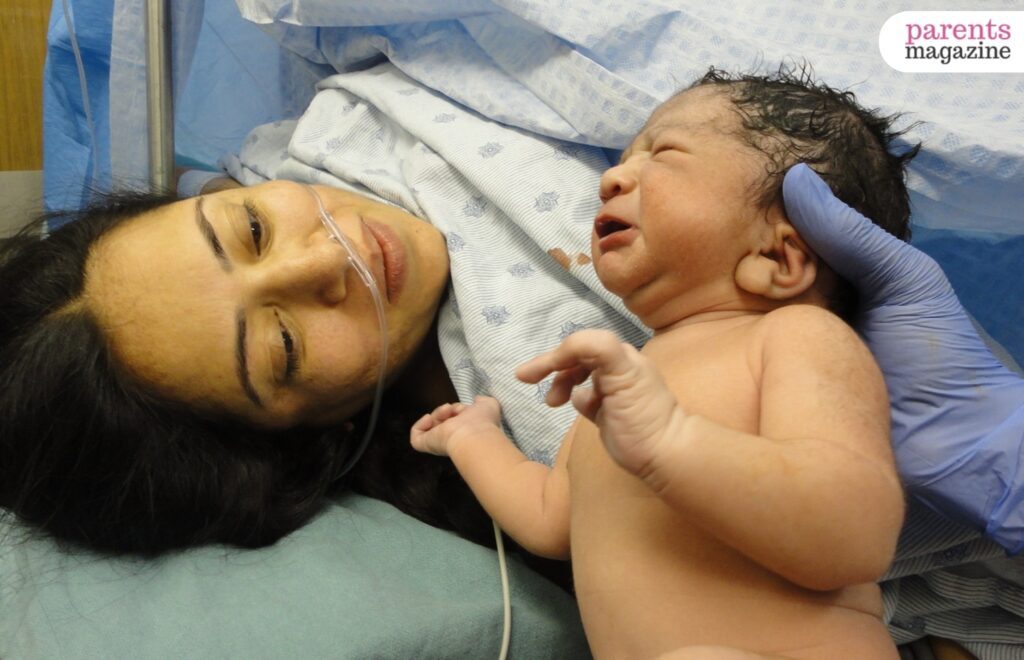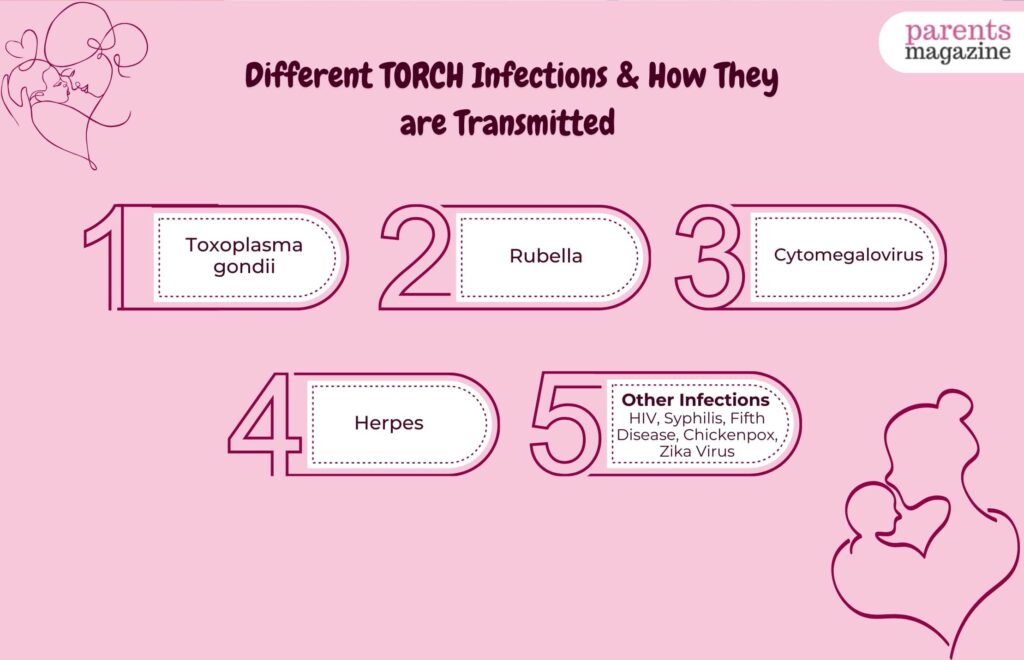
What is TORCH Infection? How Does it Affect Pregnancy?
TORCH infection or TORCH syndrome often affects pregnant women or the fetus during pregnancy. It refers to a set of infections and symptoms that occur as a result.
These infections can occur in utero or during delivery. In the worst cases, if it occurs in the fetus earlier during pregnancy, it can cause difficulty in fetal development.
Here’s all you need to know to build awareness about what TORCH infection is. Please Keep reading to learn what the TORCH acronym means and its treatment process.
What is TORCH Infection?

TORCH Infection is a collection of infections that affect a fetus or a newborn baby. It can occur when the fetus is developing inside the womb. It can also occur in utero while a pregnant woman is giving birth or after childbirth.
The name is taken from the group of infectious agents. Medical experts took the initials of these infectious agents to term this infection. The acronym TORCH stands for:
T – Toxoplasmosis
O – Other Agents like Treponema pallidum, Parvovirus B19, and Varicella Zoster Virus.
R – Rubella
C – Cytomegalovirus
H – Herpes simplex and HIV
During pregnancy or post-delivery, a baby lacks enough immunity power to fight TORCH infections. It’s difficult for them to prevent the complications. So, these infections may result in several pregnancy complications or prevent the baby’s development of several organs.
TORCH infection can take different severe forms. The severity level depends on the point at which the infection the mother transfers to the fetus or the baby. Also, it depends on the type of infection that’s getting transferred and how much those have developed already.
Typically, such infections have the worst effects when transmitted early during the pregnancy. Those cases would require prompt treatment.
TORCH infection causes more than 2% of all congenital disorders. The TORCH infection causes most disorders in children present during birth.
The effect can be of various types, such as delayed development of the fetus, physical malformation, etc. Sometimes, it can cause loss of pregnancy as well.
Reasons Why Someone Has TORCH?

During pregnancy, the placenta connects both the mother and the child. The placenta is responsible for transmitting nutrition and oxygen to the fetus. TORCH infection can be transmitted through the placenta from the mother to the baby during pregnancy.
If the infection is passed during childbirth, the baby catches the infection while moving through the birth canal. For post-birth transmission, mothers can also transmit TORCH infection through breast milk.
Typically, mothers catch TORCH infections before pregnancy and pass it down to the fetus or the baby during childbirth. Below are some ways different infections pass down to the baby from the mother.
Different TORCH Infections & How They Are Transmitted

All the infections affect the human body in different ways. The infections spread through a variety of means.
Toxoplasma gondii
This protozoan parasite gets transmitted to women when exposed to cat faces. Eating undercooked meats can also cause this parasite to affect the human body. It causes toxoplasmosis. For pregnant women, this infection causes fatigue and fever. But, when transmitted to a baby, it affects their retina and causes choroid inflammation.
Rubella
Pregnant women can catch the rubella virus through direct contact with the virus. It can also be transmitted through saliva, mucus, or droplets. This infection can be present in an affected person with minimal and mild symptoms like polyarthritis, rashes, or swelling of the lymph nodes.
However, when transmitted to a baby or a fetus through pregnancy, it can cause congenital rubella syndrome. This infection characterizes deafness, rash, or clouding of eyes.
Cytomegalovirus
Cytomegalovirus infection spreads through direct contact and body fluids like saliva, tears, semen, or vaginal fluid. Generally, CMV symptoms have mild effects on adults. However, for the fetus or a newborn, it can show symptoms of rashes and inflammation of the eyes and can cause deafness.
Herpes
The last of the TORCH infections is very contagious and can spread through different mediums. There are two types of herpes. HSV-1 and HSV-2. For example, HSV-1 can spread through saliva, kissing, and sharing drinks or utensils.
The second type of herpes is transmitted through sexual intercourse. Newborns catch this infection during birth when moving through the birth canal. This infection can cause blisters in the brain or inflammation in the brain, which is known as meningoencephalitis.
Other Infections of Torch
Apart from the main infections, several other infections are considered TORCH infections. Following are the sets of infections that affect pregnant women and their babies –
HIV
Here is a deadly infection that occurs due to sexual contact. It can also come from someone with HIV-infected blood. Most children get HIV during the third trimester of pregnancy. If the birthing parent is not under medication, HIV symptoms in the baby start to become prominent.
Syphilis
This infection can transmit during sexual intercourse (vaginal/oral/anal). Babies can get Congenital syphilis during childbirth and while moving through the birth canal.
Fifth Disease
A mild rash that occurs because of parvovirus B19. It spreads to a child through mucus when someone coughs or sneezes.
Chickenpox
Varicella-zoster virus causes the TORCH infection, which also goes by the name chickenpox. Usually, having chickenpox once in a lifetime builds a child’s immunity against it. Plus, there are vaccinations to help build immunity against this virus.
Zika Virus
This virus spreads in specific locations where it is common. Usually, mosquitoes are first infected with this virus, and then they spread further among humans. This virus can also affect someone through sexual intercourse.
Symptoms of TORCH Infections

TORCH infection is the umbrella term for infections that affect a newborn or a fetus. There are infection-specific symptoms that occur in newborns and mothers. Here are some common symptoms to look out for –
TORCH Symptoms in Newborns

Symptoms of TORCH in newborns include jaundice, small and red-brown spots, fever, and liver or spleen enlargement.
TORCH Symptoms in Children
In children, most of the TORCH infections include failure to thrive, irritability, developmental disabilities, rashes, disabilities to learn, and anemia.
TORCH Symptoms in Mothers
The symptoms of TORCH infections in mothers are mild and often asymptomatic. But they aren’t completely without any symptoms or signs. Usually, they experience sluggishness and fever and find it difficult to feed.
But when they transmit the symptoms to the child through birth, it can affect the child in the following ways –
- Low weight at birth
- small sized head
- Requiring hearing impairment
- Rash
- Poor feeding
- Mental retardation
- Autism
How to Diagnose TORCH Infection?

TORCH infection can be diagnosed in a pregnant woman or a newborn. Here is the process of diagnosis for both pregnant women and a newborn –
TORCH Infection Diagnosis During Pregnancy
Typically, doctors recommend blood tests, PCR, and a viral culture to test for TORCH infection. A viral culture means collecting a person’s fluid, cells, or tissues to test for TORCH infection in them.
Common test samples include saliva from the mouth, mucus from the nose, blood, or pee. The healthcare provider tests the sample by analyzing the virus’s genetic material present in your fluid sample.
If there are any congenital disorders or problems with the growth of the fetus, it should be visible through a prenatal ultrasound. They can also be diagnosed before birth.
TORCH Infection Diagnosis During in Newborns
If a pregnant mother has any TORCH infection, the doctor will examine the baby for such infections post-childbirth. However, a mother with TORCH infection doesn’t need to transmit the same to the child. All TORCH infections don’t get passed down to the children during pregnancy.
However, here’s when the healthcare providers test newborns for TORCH infections –
- During the physical exam of the baby after childbirth.
- After childbirth, if the infant shows symptoms of TORCH infection, the doctor will examine them for the virus.
- Ultrasound or imaging tools can also help detect TORCH infections during pregnancy.
What’s the Treatment?
The treatment of TORCH infection depends on the severity of the infection and the symptoms. In most cases, it may include using antibiotics, antiparasitic, or antiviral medicines.
Some of these infections don’t need any treatment since those viruses can go away with rest and hydration.
But, if women get diagnosed with severe symptoms during pregnancy, the healthcare provider will work with the maternal-fetal medicine specialist to help them.
It’s best to get help from your healthcare provider if you have any symptoms of such infections during pregnancy.
Read Also:
Already have an account?
Sign In
Create your account
User added successfully. Log in








